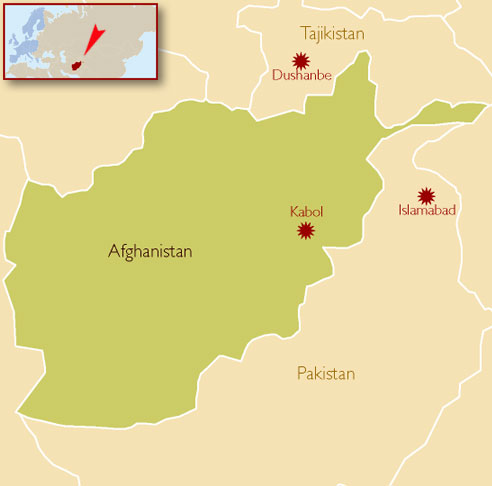Afghanistan
The SpecialEasts on the road for you:
Western europe. Eastern europe. Balkans. Turkey. CIS. Middle East. Central Asia.

Zenit offers the following services for Afghanistan:
You need to transport goods from or to Afghanistan? Just give us a call.
Our team will find the right solution for you!
Afghanistan - brief overview about the Zenit destination Afghanistan.
Geopraphy

Afghanistan is landlocked and mountainous, with plains in the north and southwest. The highest point is Nowshak, at 7,485 m (24,557 ft) above sea level. The climate varies by region and tends to change quite rapidly. Large parts of the country are dry, and fresh water supplies are limited. The endorheic Sistan Basin is one of the driest regions in the world.
Demographics

A 2009 UN estimate of the total Afghan population is 28,150,000. In 1979, it was 13,051,358. By 2050, the population is estimated to be increased to about 82 million. About 2.7 million Afghan refugees are currently registered in Pakistan and Iran.
The only city in Afghanistan with over one million residents is its capital, Kabul. The other major cities in the country are, in order of population size, Herat, Kandahar, Mazar-e Sharif, Jalalabad, Ghazni and Kunduz. Urban areas are experiencing rapid population growth following the establishment of the Islamic Republic in 2002.
Economy
Afghanistan is a member of the South Asian Association for Regional Cooperation (SAARC), Economic Cooperation Organization (ECO) and the Organization of the Islamic Conference (OIC). It is an impoverished country, one of the world's poorest and least developed. Two-thirds of the population lives on fewer than 2 US dollars a day. Its economy has suffered greatly from the 1979 Soviet invasion and subsequent conflicts, while severe drought added to the nation's difficulties in 19982001. According to the World Bank, "economic growth has been strong and has generated better livelihoods" since 2001.
The economically active population in 2002 was about 11 million (out of a total of an estimated 29 million). As of 2005, the official unemployment rate is at 40%. The number of non-skilled young people is estimated at 3 million, which is likely to increase by some 300,000 per annum.
The nation's economy began to improve since 2002 due to the infusion of multi-billion US dollars in international assistance and investments, as well as remittances from expats. It is also due to dramatic improvements in agricultural production and the end of a four-year drought in most of the country.
Climate
Afghanistan has a continental climate with very harsh winters in the central highlands, the glacierized northeast (around Nuristan) and the Wakhan Corridor, where the average temperature in January is below -15°C, and hot summers in the low-lying areas of Sistan Basin of the southwest, the Jalalabad basin of the east, and the Turkistan plains along the Amu River of the north, where temperature averages over 35°C in July. The country is frequently subject to minor earthquakes, mainly in the northeast of Hindu Kush mountain areas. Some 125 villages were damaged and 4000 people killed by the May 31, 1998 earthquake.
Infrastructure

Ariana Afghan Airlines is the national airlines carrier, with domestic flights between Kabul, Kandahar, Herat and Mazar-e Sharif. International flights include to Dubai, Frankfurt, Istanbul and a number of other destinations. There are also limited domestic and international flight services available from Kam Air, Pamir Airways and Safi Airways.
The country has limited rail service with Turkmenistan. There are two railway projects currently in progress, one is between Herat and the Iranian city Mashad while another is between Kandahar and Quetta in Pakistan. Most people who travel from one city to another use bus services. Automobiles have recently become more widely available, with Toyota, Nissan and Hyundai dealerships in Kabul. A large number of second-hand vehicles are also arriving from the UAE. Nearly all highways and roads are being rebuilt in the country.
More Information: http://en.wikipedia.org/wiki/Afghanistan
Text is available under the Creative Commons Attribution-ShareAlike License; additional terms may apply. See Terms of Use for details.
Wikipedia® is a registered trademark of the Wikimedia Foundation, Inc., a non-profit organization.

 Deutsch
Deutsch Turkce
Turkce Russian
Russian